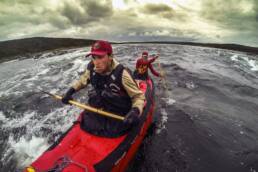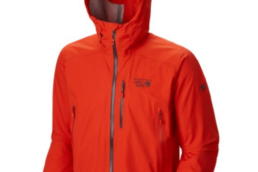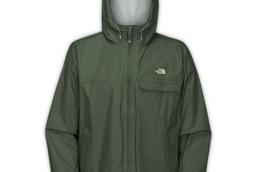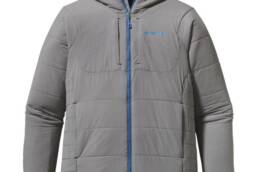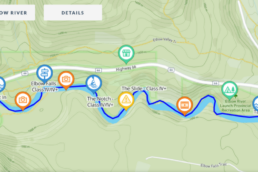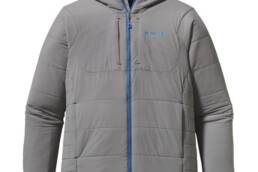On a 1,750-kilometre, 35-day paddling epic, an old-school mountain master’s clothes – or lack thereof – still make the man. Story and photographs by Frank Wolf.
At first glance, Ryan Bougie wasn’t the greatest partner to join me on a 1,750-kilometre (1,087-mile) canoe journey from Yellowknife, Northwest Territories, to Chantrey Inlet, Nunavut. He’d never been to Nunavut. He’d never been to the Arctic. He’d done a bit of canoeing, but never a true canoe trip. But Bougie, 35, is a mountain man, and mountain men are tough.
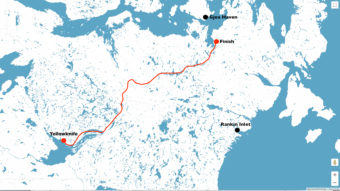
Over the past 15 years, Bougie has pulled off epic ski trips, like traversing the Coast Range from Pitt Lake, British Columbia, to Wrangell, Alaska, and skiing Denali in Alaska. He’s also accomplished numerous other wilderness rambles in Alaska and BC utilizing a trusty pack raft. With this résumé, I figured he’d be an ideal partner for a canoe trip across the windswept tundra of the Northwest Territories and Nunavut. After all, the heather and rock of the barren Arctic grounds are a doppelgänger of the British Columbia alpine.
A few days in, the rain came. Bougie pulled out a tattered, delaminating cycling jacket without a hood. He had no rain pants, and his base layers consisted of ratty merino wool with more holes than actual material. He did bring his grandmother’s straw hat, though. I was aghast. “Ryan, where’s your shell top and bottoms?” I asked. “I thought you were a skier. Don’t you have a jacket with a hood, some waterproof pants?”
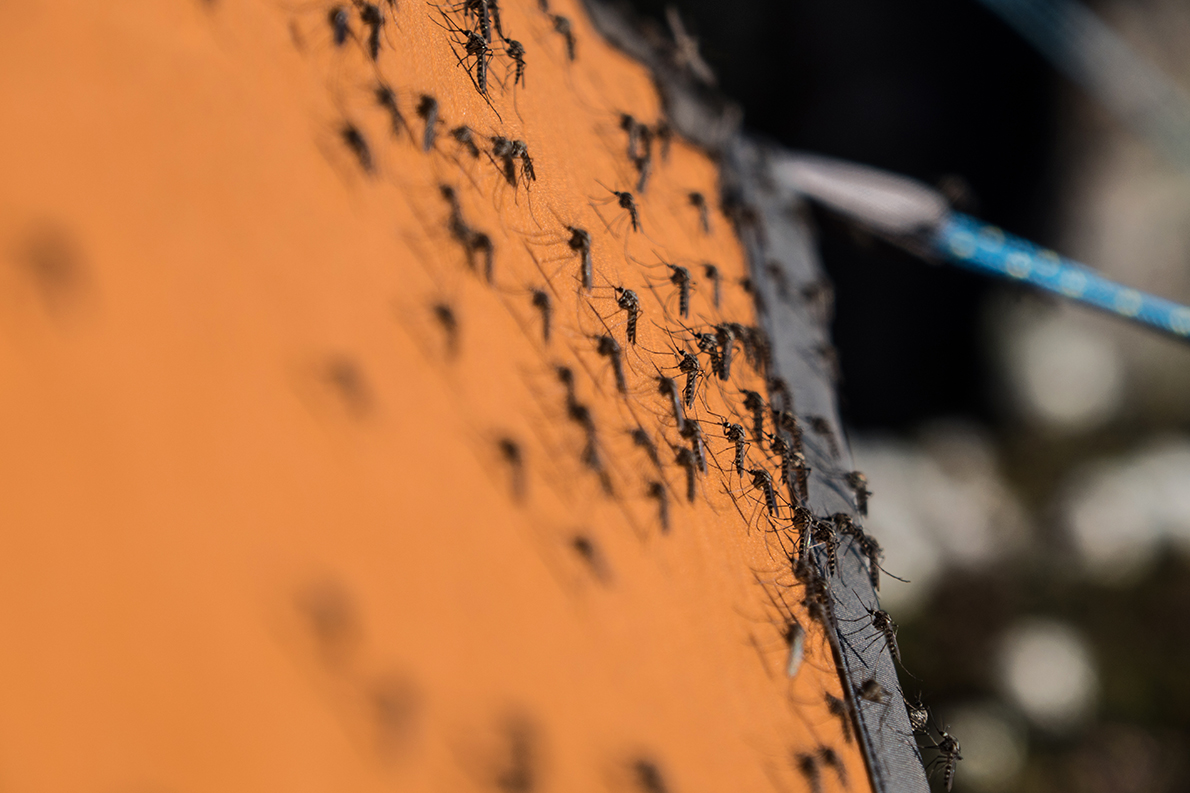
“Yeah, but I didn’t want to wreck my good ski gear, so I brought this stuff,” he replied. I reflected on previous northern expeditions I had finished. “This will be interesting,” was my comment.
As we moved deeper into the territory, it became colder. The rain and wind bit when the north wind blew. The mosquitoes bit when it warmed up. That’s all you get in Nunavut: wind or bugs. Nothing else. And yes, the insects are a form of weather up there.

The Arctic began to teach Bougie lessons quickly. The wind, the insects, the rapids, and the bitter rains all conducted classes. Forced to be creative, he crafted a hood out of a ziplock bag. He put on every layer he had, and it soaked right though to his bones again and again. He endured a nagging pain in one shoulder for two weeks. Despite this, he soldiered on like a mountaineer on the biggest mountaintop in the world, albeit one without a downslope escape. And then one morning, the revelation arrived. “I fucked up,” he said. “I didn’t bring the right clothing.”
As the trip carried on, day after day, week after week, with ten hours of daily movement and no rest days, Bougie transformed. Twenty pounds melted off his body, the big tire around his belly only a memory. Mosquitoes and black flies remained vicious, yet less noticeable to him. The strokes required to negotiate the rapids became automatic. Headwinds just made him paddle harder. The pain in his shoulder subsided. The cold was merely cool.
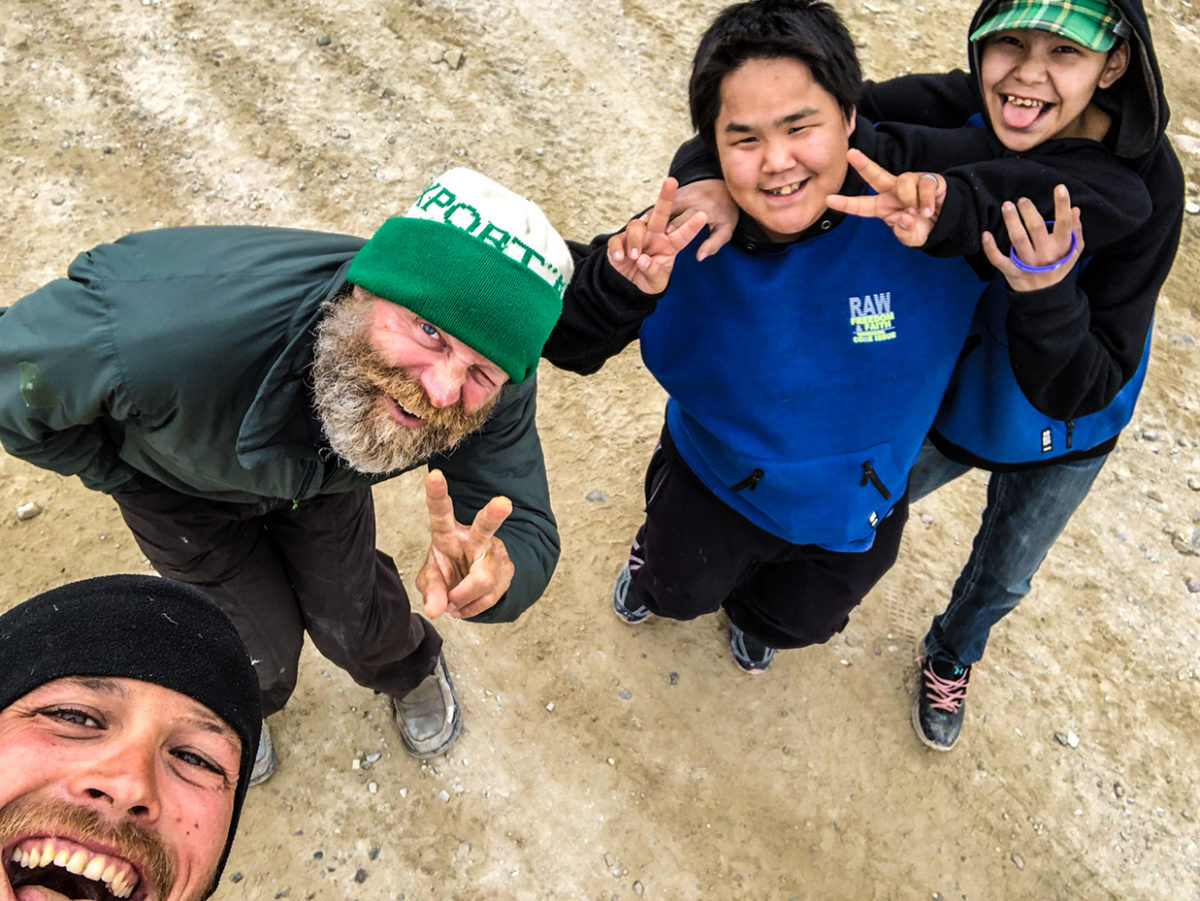
On day 35, our journey ended at the Arctic Ocean, where we met an Inuit family that treated us like their own. After spending five days waiting for a plane out of the hamlet of Gjoa Haven, elders Martha and Jacob Atqittuq wanted to make Boogie their tiguak, or adopted child. He emerged from his mountain cocoon fully formed as an expedition paddler, an Arctic traveller, a local. For the summer at least, he was a changed man.
It snowed lightly on the morning of our flight out. Standing in the gravel streets of Gjoa Haven, Bougie turned his head skyward. Tiny flakes caught and melted in his Nunavut beard. There was a glint in his eye.
Frank Wolf lives in North Vancouver, BC. His first book, Lines on a Map, was recently published by Rocky Mountain Books.
Related Stories
How to be a Whitewater Paddling Superstar – Getting started
Simon Coward of Aquabatics in Calgary has taught hundreds of people how to get started whitewater paddling. So we asked…
Review: Mountain Hardwear Torsun Jacket
The Torsun is a "full-featured, 3-layer alpine climbing shell with superior articulation. Made for the serious…
Pacific Northwest Essential: The North Face Shifter Jacket Review
Screw the lycra jersey and SPD-compatible shoes, the most essential piece of gear the Pacific Northwest rider can have…
Review: Patagonia Nano-Air Jacket
You may notice we don't review a ton of gear on here, but when we stumble across certain products we feel we…
Trailforks for Paddling? A Calgary Company is Making it Happen
Simon Coward of Aquabatics in Calgary is spearheading a project to create the equivalent of the popular mountain biking…
GEAR REVIEW: Patagonia Nano-Air Jacket
You may notice we don't review a ton of gear on here, but when we stumble across certain products we feel we…


